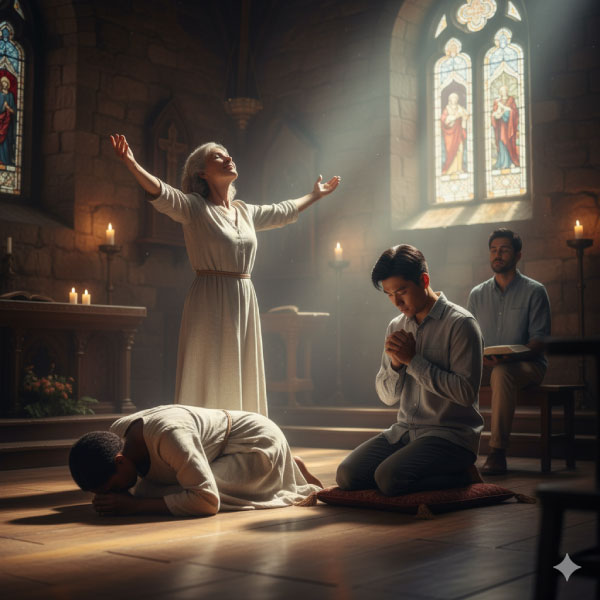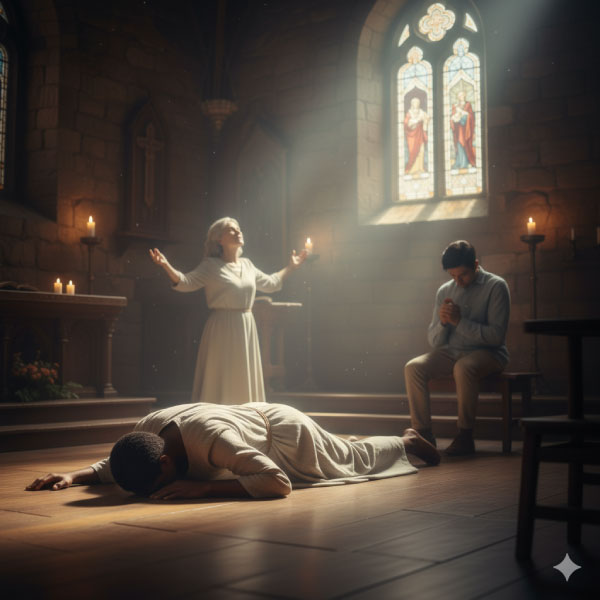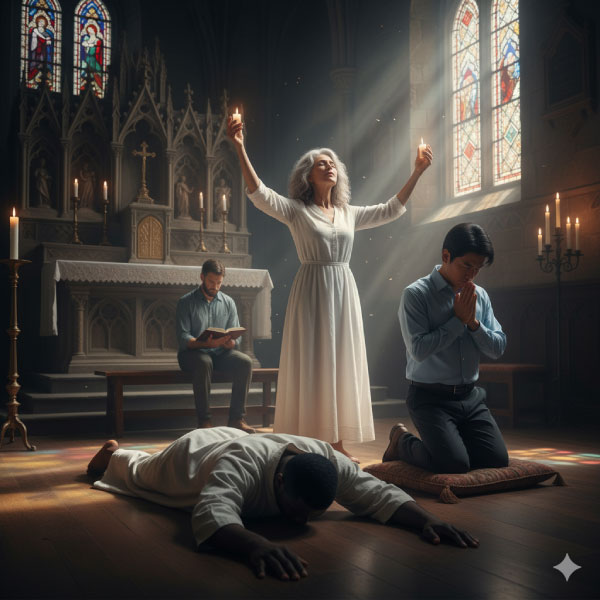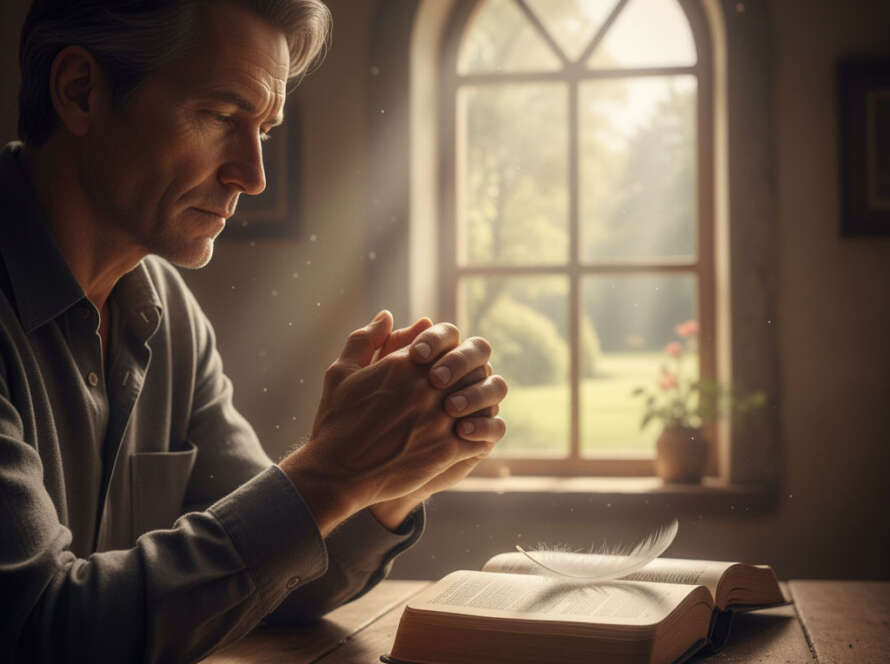When we think of prayer, our minds often go straight to the words we say or the thoughts we think. But prayer is a holistic act, engaging our spirit, mind, and body. Throughout Scripture and church history, believers have expressed their devotion and communion with God through a variety of physical postures, each carrying its own profound significance.
These positions aren’t about magic or mandatory rituals; rather, they are physical expressions that can help align our hearts, minds, and bodies with the spiritual truth we are proclaiming. They can deepen our engagement, focus our intentions, and reflect the very nature of our relationship with God at that moment.
Let’s explore some common prayer postures and the spiritual meaning behind them.
1. Kneeling: Humility, Submission, and Adoration

Kneeling is perhaps the most iconic prayer posture, deeply rooted in biblical tradition. It signifies:
- Humility: A recognition of God’s supreme authority and our subservience.
- Submission: A physical surrender of our will to His.
- Adoration: An act of worship, acknowledging God’s majesty and holiness.
Jesus knelt to pray in Gethsemane (Luke 22:41), and countless saints have found profound communion with God on their knees. It creates an atmosphere of reverence and a conscious lowering of self before the Almighty.
2. Standing: Readiness, Respect, and Declaration
Standing for prayer is often seen in corporate worship settings and signifies:
- Readiness: Being alert and prepared to hear from God and act on His word.
- Respect: A posture of honor, much like standing in the presence of a dignitary.
- Declaration: Used when making bold proclamations, interceding for others, or engaging in spiritual warfare.
Many Old Testament figures, like Abraham and the priests, stood before the Lord. It communicates an active, engaged participation in prayer.
3. Prostrate: Deepest Humiliation, Utter Surrender, and Intense Intercession

This posture involves lying face down on the ground. It is the most extreme expression of:
- Humiliation/Abasement: A profound sense of brokenness, grief, or acknowledging one’s utter nothingness before God’s majesty.
- Utter Surrender: Completely yielding one’s body and will, often in moments of overwhelming distress or desperation.
- Intense Intercession: A posture often adopted during times of deep spiritual burden or fervent petition.
Both Jesus (Matthew 26:39) and His disciples (Matthew 26:45) fell on their faces in prayer. It’s a posture for moments of intense spiritual encounter.
4. Sitting: Meditation, Listening, and Contemplation

Sitting in prayer is often adopted for:
- Meditation: A relaxed posture conducive to deep thought and reflection on Scripture.
- Listening: Being still and attentive to the voice of God.
- Contemplation: Resting in God’s presence without necessarily uttering many words.
Mary sat at Jesus’ feet, listening to His words (Luke 10:39), a posture that speaks of attentiveness and learning. This posture emphasizes receptive prayer.
5. Hands Lifted (Orans Posture): Praise, Expectancy, and Receiving

This ancient posture, often called the “orans” (praying) position, involves raising hands to heaven:
- Praise & Worship: An outward expression of adoration and surrender to God’s greatness.
- Expectancy: Open hands symbolize an openness to receive from God.
- Surrender: A posture of offering oneself completely to God.
The Psalms are filled with calls to lift up holy hands in prayer (Psalm 141:2, 1 Timothy 2:8). It’s a powerful way to engage physically in worship and openness.
Why Does Posture Matter?
Ultimately, the most important posture in prayer is that of a humble and sincere heart before God (Psalm 51:17). However, physical postures can:
- Aid Focus: They can help us to block out distractions and concentrate on God.
- Express Intention: Our bodies can express what our words alone sometimes cannot.
- Deepen Connection: Engaging our whole being—spirit, soul, and body—in prayer can lead to a more profound experience with God.
Experiment with different postures in your personal prayer time. See how physically aligning yourself can help you connect more deeply with the spiritual realities of your prayer.
What prayer posture do you find most meaningful, and why? Share your experience in the comments!


